iPhone 7 Plus
The iPhone 7 Plus is now the cheapest large-screen iPhone that Apple still sells, so it remains a popular choice despite being replaced twice-over by the iPhone 8 Plus and then the even bigger display of the modern Apple flagships, culminating in the latest iPhone 12 Max.
Moreover, it's updated with all the perks of iOS 14, including widgets, Dark Mode, and a host of app upgrades, giving it all the software in the priciest flagship iPhones.
Even though its traditional iPhone design won't wow you in 2021, the 7 Plus did bring about a new Touch ID home button pad with no moving parts and a water-resistant design that will give you peace of mind. It's less breakable than previous iPhones, especially if you pair it with an iPhone 7 Plus case.

Weight: 188g
Dimensions: 158.2 x 77.9 x 7.3mm
OS: iOS 12 (or iOS 13 beta)
Screen size: 5.5-inch
Resolution: 1080 x 1920
CPU: Apple A10 Fusion
RAM: 3GB
Storage: 32/128/256GB
Battery: 2,900mAh
Rear camera: 12MP
Front camera: 7MP
It's also been heavily discounted since it launched, making the iPhone 7 Plus one of the most affordable Apple phones to run the latest iOS 14. While no longer sold directly by Apple, you can still buy the iPhone 7 Plus at plenty of retailers.
But it's missing something significant: a 3.5mm headphone jack. The iPhone 7 series was the first without this standard way of plugging in headphones. Apple AirPods did come along to help alleviate this problem, at least to some degree.
Why do we recommend the iPhone 7 Plus over the standard iPhone 7? Two reasons other than the bigger screen size: improved battery life and an innovative camera.
Battery is always going to be better on a bigger phone, given the larger capacity, but the camera was a surprise at launch. Apple added a dual-lens camera, a conscious effort to make the iPhone 7 Plus a distinctly different choice.
The 7 Plus is the better of the two 2016 iPhones, even if it hasn't moved in leaps and bounds from the overall iPhone 6S Plus look, and it's cheaper than the iPhone XR if you're on a budget. Make sure to compare prices with the new iPhone SE 2020, which is physically identical but has a far more current chipset (and thus will get iOS updates for years longer).
iPhone 7 Plus price and availability
- iPhone 7 Plus price (32GB): $569 (£569, AU$929)
- iPhone 7 Plus price (128GB): $669 (£669, AU$1,099)
- Launch price: from $769 (£719, AU$1,229)
- iPhone 7 Plus release date: September 2016
At launch, the iPhone 7 Plus price started at $769 (£719, AU$1,229) for the entry-level 32GB model and $869 (£819, AU$1,419) for the 128GB variant. Apple also offered a 256GB iPhone 7 Plus, but this particular model has now been discontinued.
With the arrival of newer generations of iPhone, the iPhone 7 Plus price has dropped, and it can now be picked up for $569 (£569, AU$929) in its 32GB guise.
Meanwhile, the 128GB iPhone 7 Plus price is down to $669 (£669, AU$1,099).
The iPhone 7 Plus is still widely available from Apple directly and from major retailers and carriers around the world.

Duplicate design
- Water resistance is genuinely useful
- Lack of a headphone jack is initially frustrating
- More of the same design, with the same look as predecessors
It's easy to tell the iPhone 7 Plus apart from its predecessors, as it's the only iPhone to sport two cameras on its rear.
Aside from the bulkier camera block, lack of a headphone port (more on that in a minute) and a couple of new colors though, Apple's stuck with exactly the same design that's served it well for its previous two iPhone iterations.
If you've owned, or are familiar with, the iPhone 6 Plus or 6S Plus then you'll know exactly what the iPhone 7 Plus looks like.
The rounded corners, aluminum frame and minimalist styling means the iPhone 7 Plus retains its premium status, and with the introduction of new black and 'jet black' colors, fans have two new ways to show their dark side.
More recently, Apple introduced a special edition red version of the iPhone 7 Plus (and iPhone 7) in partnership with the Global Fund to support HIV/AIDS programs and help deliver an AIDS-free generation - though only the black, silver, gold and rose gold shades are still sold direct from Apple.
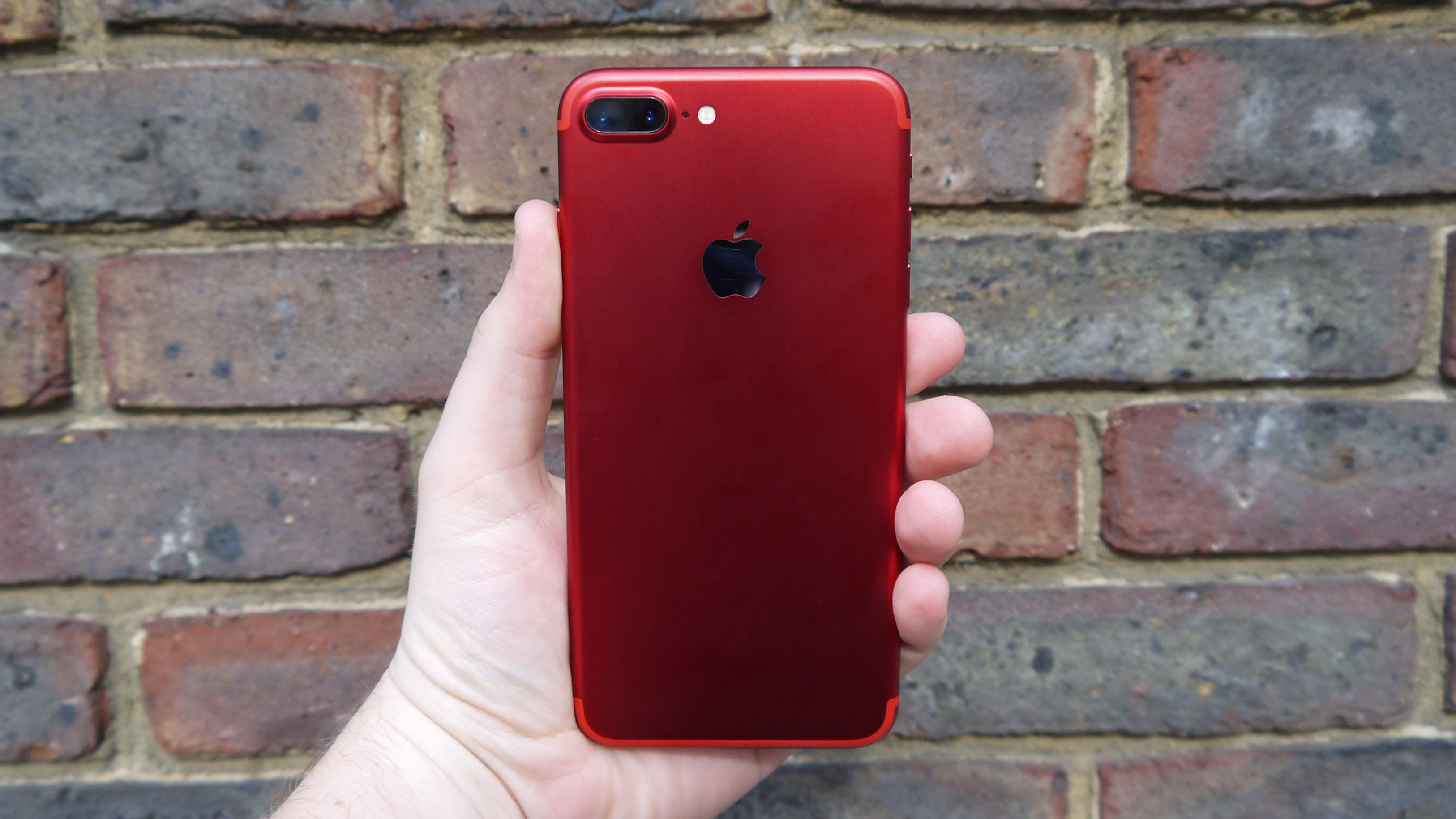
We've used the red version of the iPhone 7 Plus now and found most people who have seen it like the look of the phone, but no-one we've spoken to has been thrilled enough to jump out of their seats to buy the phone in red immediately.
If you're curious about the shiny jet black finish, check out our iPhone 7 review, but if you're interested in the standard black color then stay right here.
We're fans of this matte black finish, as it gives the iPhone 7 Plus an understated yet elegant look – basically the polar opposite to the gaudy rose gold that's also an option here.

Moving on to the lack of a headphone jack, it's a decision Apple has described as "courageous", but while it's a positive step forward for the mobile industry, the short-term effects are the ones that are making the most noise for now.
- Here's what comes in the box when you buy the iPhone 7 Plus
Apple does include an adapter in the iPhone 7 Plus box, allowing you to plug in your standard 3.5mm headphone connection – but it's not a particularly appealing compromise. It also includes a set of lightning-connected EarPods, so you can avoid the adapter if you don't mind Apple's creations – but immediately there's a problem.
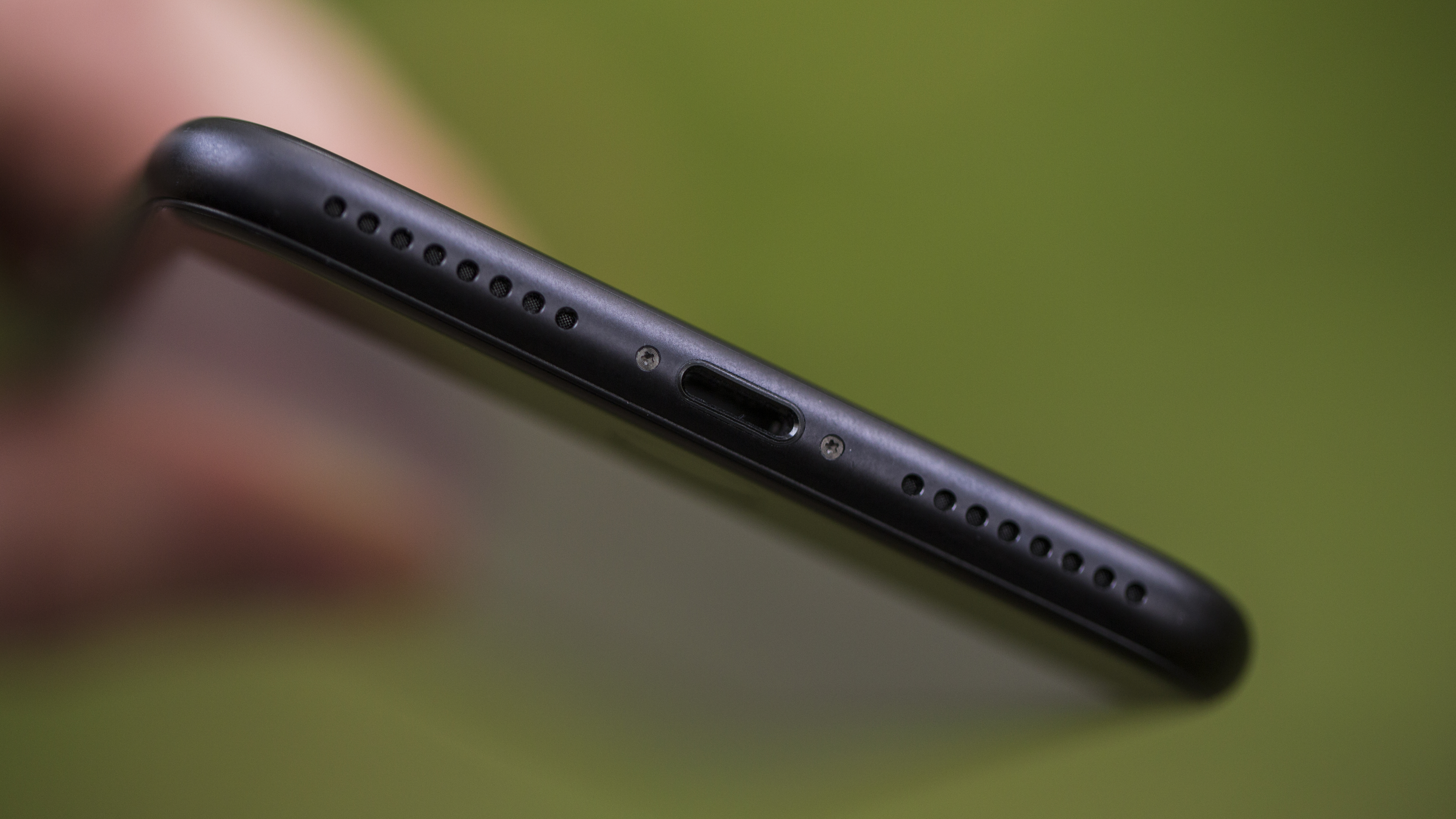
If you're someone who tends to find themselves charging their iPhone while also listening to music via a pair of wired headphones, that's a no-go with the iPhone 7 Plus. It's one or the other – unless you use an adaptor that's rather unattractive, and which you'll have to purchase separately.
The easy way around this is to invest in a set of wireless headphones – Apple's own AirPods are available for $159 (£159, AU$229) – but any Bluetooth set will work with the handset if you want to spend less.
It's far from a crisis at Apple, but the inconvenience is real – and it's one we experienced during our review – although it's one that can be easily overcome if you're willing to compromise a little.
A new feature that's much less controversial is the IP67 rating for the iPhone 7 Plus, meaning it's both dust-proof and water-resistant.

It'll be able to survive an accidental slip into the bath, or a quick email bashed out in the shower, with the official test showing it's good for a half-hour dip at a depth of up to one meter in freshwater.
It's worth noting that it's not fully waterproof though, and frequent exposure to water may well spell trouble – but the iPhone is now more capable than ever of surviving life's little accidents.
Measuring 158.2 x 77.9 x 7.3mm, the 7 Plus is exactly the same size as the 6S Plus it's replacing, although it has dropped slightly in weight, from 192g to 188g. For users looking to upgrade from the now two-year-old 6 Plus, the 7 Plus is slightly thicker, and still a little heavier than your current device.
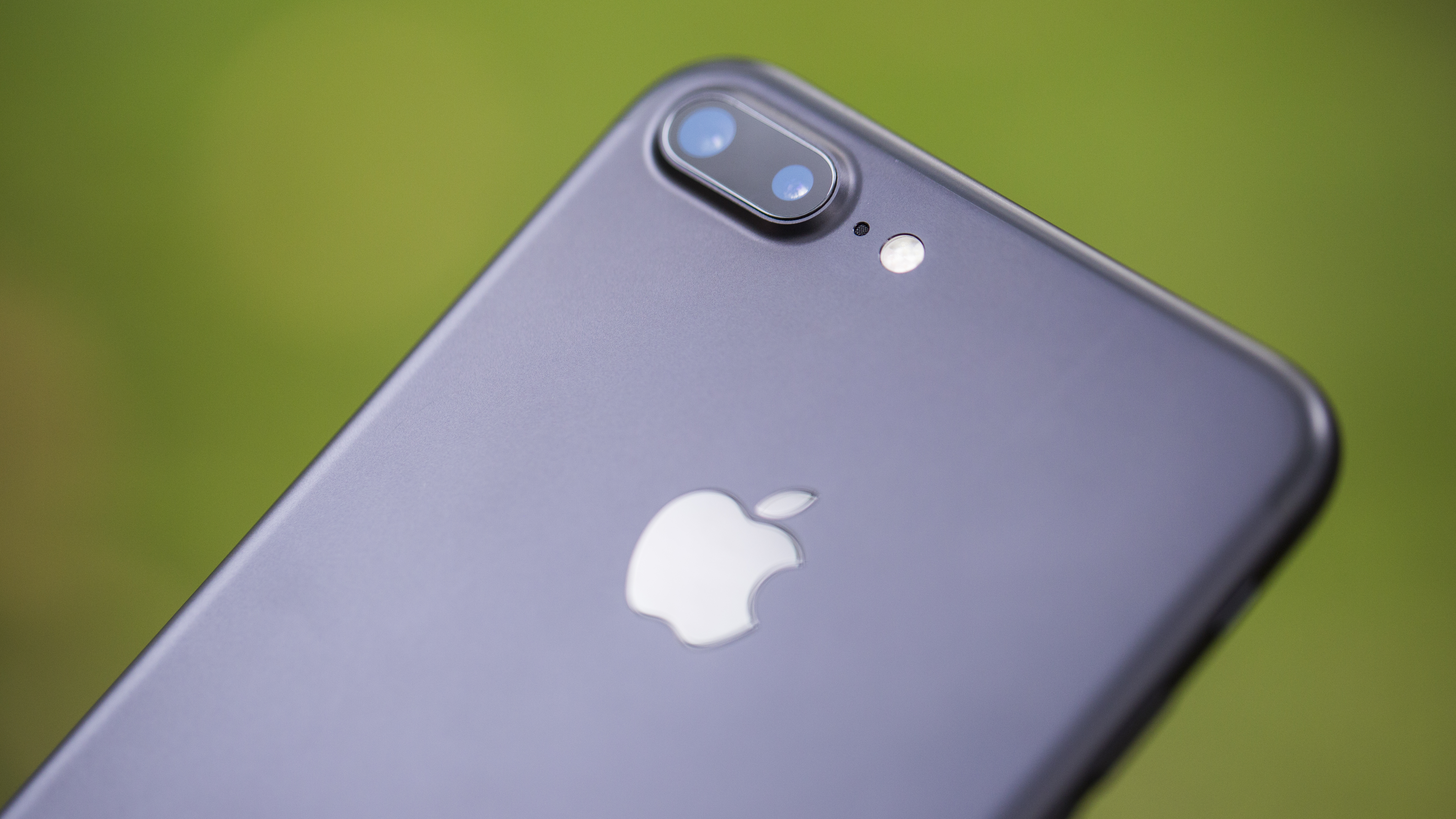
You're unlikely to notice the difference in the hand though, as it'll still stretch your one-handed dexterity to the max, especially when it comes to hitting the back button in the top-left corner.
Apple's 'reachability' feature, while sees the top of the screen jump down to halfway with a double-tap of the home key, is still in play here, which helps alleviate the sheer height of the handset dictated by the Cupertino firm's now-iconic chunky bezels.
Bringing all this together, Apple has another well-styled iPhone on its hands, and while it hasn't broken any new ground in terms of looks, this is the most robust and refined handset we'd seen from the firm at the time, though numerous handsets from Apple and others have since improved upon it.
All-new home button
- No longer a physical button - and feels strange
- Force Touch tech leaves more room inside the phone
"Yeah it's a button, so what?" a friend said to us when we asked them to push our button. Then we turned the iPhone 7 Plus off, and asked them to push it again. Cue confusion, amazement and a slight jaw drop.
Sometimes it's the simple things that impress, and the new home button on the iPhone 7 Plus (and iPhone 7) is somewhat of a hidden party piece.
Is it more useful than a traditional button day to day? Not really. Has it taken iPhone functionality to a whole new level? Er, no.
Is that an issue? Absolutely not.
Apple has integrated the Force Touch technology that we've already seen on the trackpad of the new MacBook into the iconic home button – which is no longer a physical button, but rather a touch-sensitive pad.
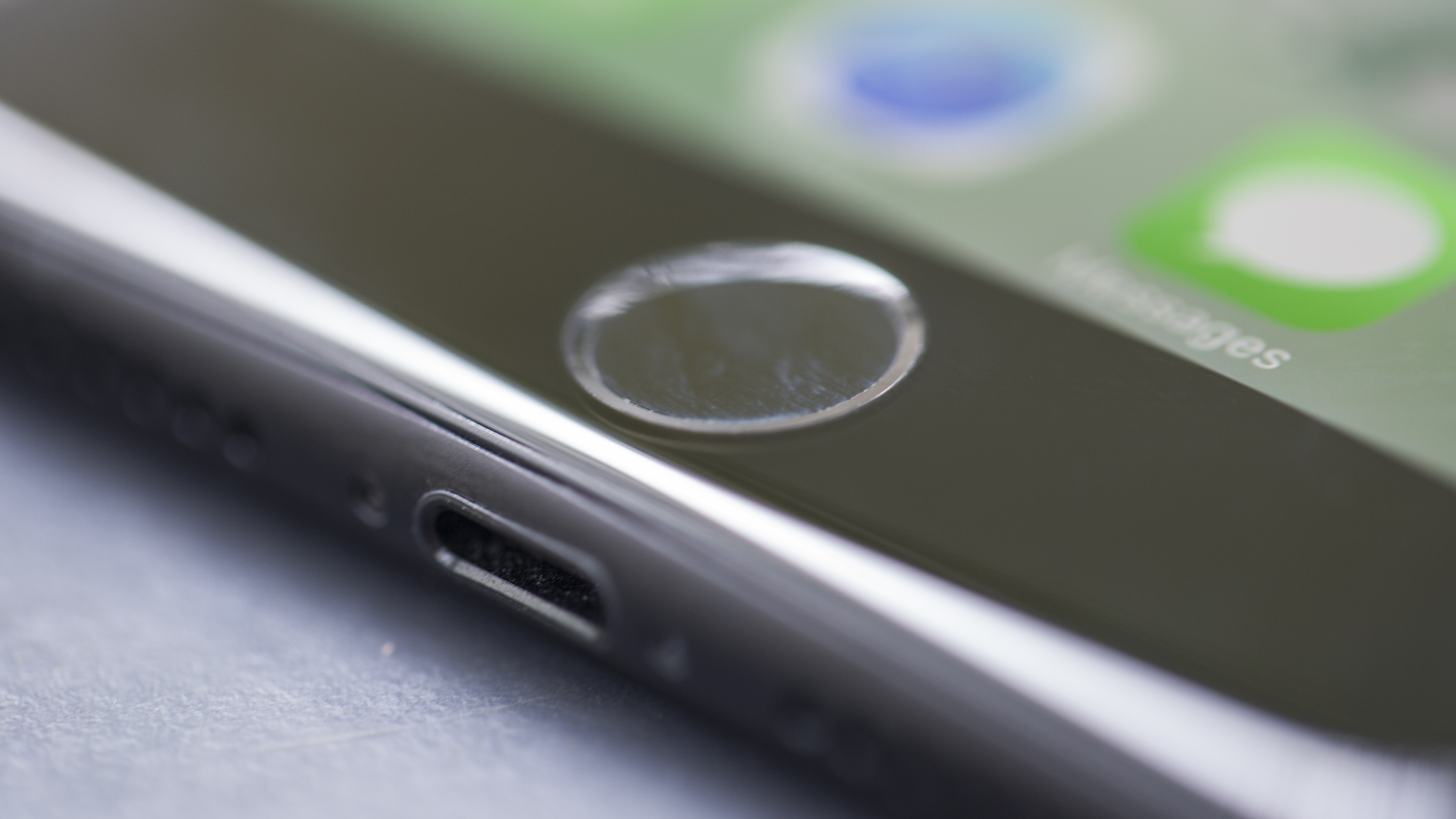
Our friends were fooled by it thanks to Apple's Taptic Engine, which produces vibrations around the pad that mimic the action of pressing a button.
At first it felt a little odd, as we knew there wasn't a physical button there, which meant we struggled to apply the required amount of pressure needed to perform the 'home' action.
It's just those cheeky little vibrations
That's because we were treating it like the home button on an Android device, which just requires a light tap to operate it. Do the same on the iPhone 7 Plus and you won't get a response – you need to press your finger on the pad as you would on a button for it to trigger.
Approach the home key without knowing it's not a regular button, though, and the transition to the force touch pad is relatively seamless.
The sensation is still a strange one though – it feels like you're almost bending the glass on the front of the display, but you're not. It's just those cheeky little vibrations.
We got used to the new setup after just a few hours though, and it probably is just a hair quicker than the traditional button on previous iPhones.
Same display, only slightly different
- Still 5.5 inches with full HD resolution
- There are more colors, so things look even better
Take a quick glance at the iPhone 7 Plus spec sheet and you'd be forgiven for thinking nothing has changed in the screen department over the iPhone 6S Plus and 6 Plus.
The display is still 5.5 inches and has the same 1080 x 1920 resolution, which produces an all-too-familiar 401ppi pixel density.
With rivals including Samsung, LG, HTC and Sony equipping their flagship smartphones with QHD resolutions, it's hard not to feel a little left behind when picking up the new iPhone 7 Plus – especially when you consider its lofty price tag.
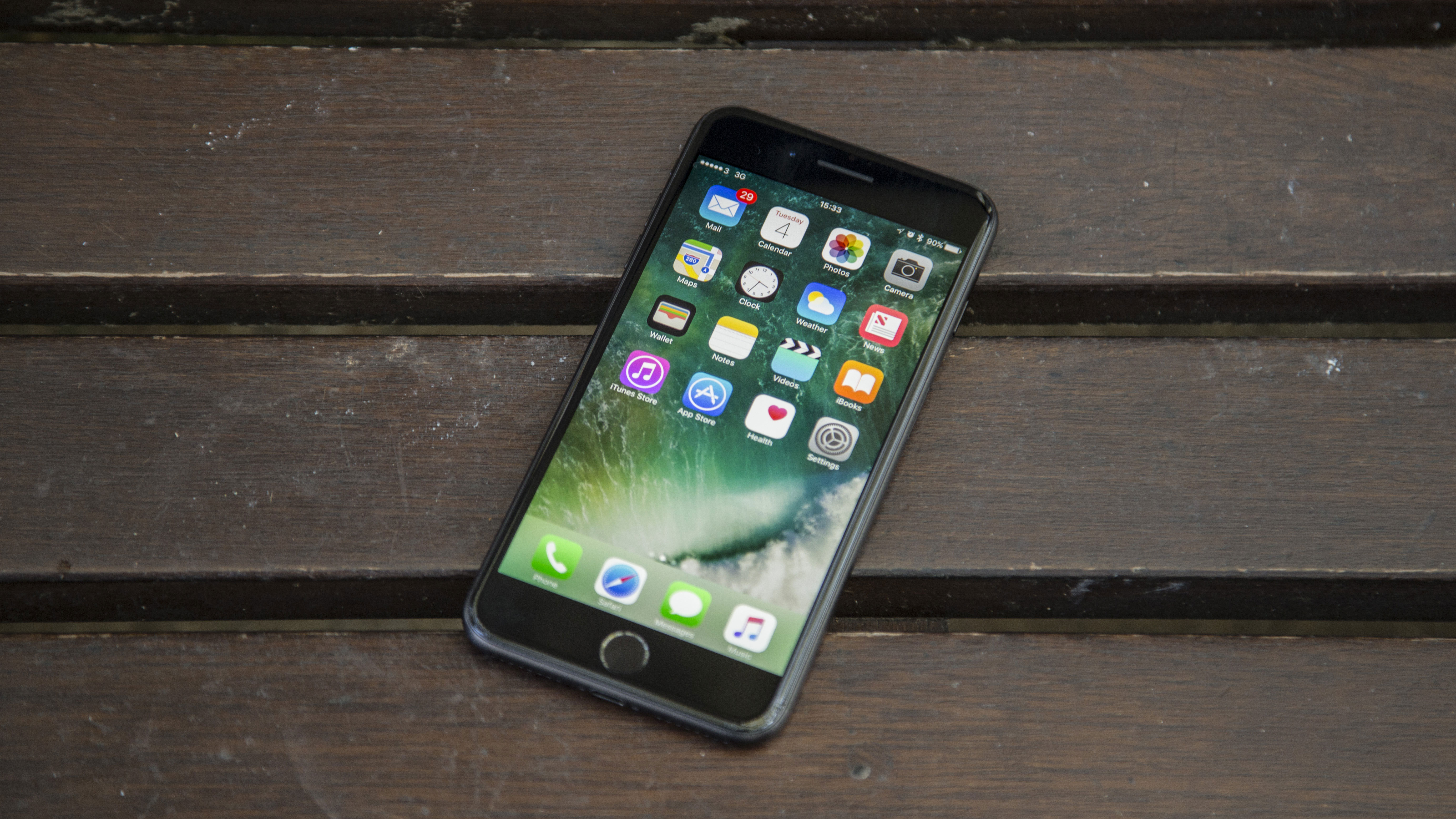
That's not to say the screen is bad. Text and images are still crisp and clear, and brightness is just as excellent as it has been on previous handsets – apparently it's 25% brighter here, although it's not particularly noticeable.
Apple has tinkered with the tech too, adding a cinema-standard wide color gamut into the mix for richer, more realistic visuals on screen, which helps when it comes to using the expansive screen as a viewfinder for the dual-camera lenses on the back of the 7 Plus.
Put the 7 Plus side-by-side with the 6S Plus, and if you look really closely you can see the colors are a little richer on the new iPhone – but there isn't much in it.
- Faster, more powerful chip offers super-slick performance
- Updated to iOS 12, the latest software from Apple
One of the big draws of iPhones for a lot of people is their ease of use, especially if you're already invested in the iDevice ecosystem, and Apple made the iPhone 7 Plus even more user-friendly with iOS 10, along with some hardware upgrades under the hood.
Since its launch though, the iPhone 7 Plus has received the next two major software updates. iOS 11 landed first back in 2017, and most recently Apple has treated it to iOS 12, keeping it in line with its latest iPhone launches.
The 7 Plus boasts the firm's A10 Fusion chip, which Apple claims delivers 40% more performance than the A9 processor in the iPhone 6S Plus, and double the speed of the A8 chip in the iPhone 6 Plus. It is, on paper at least, well equipped to deal with whatever you throw at it.
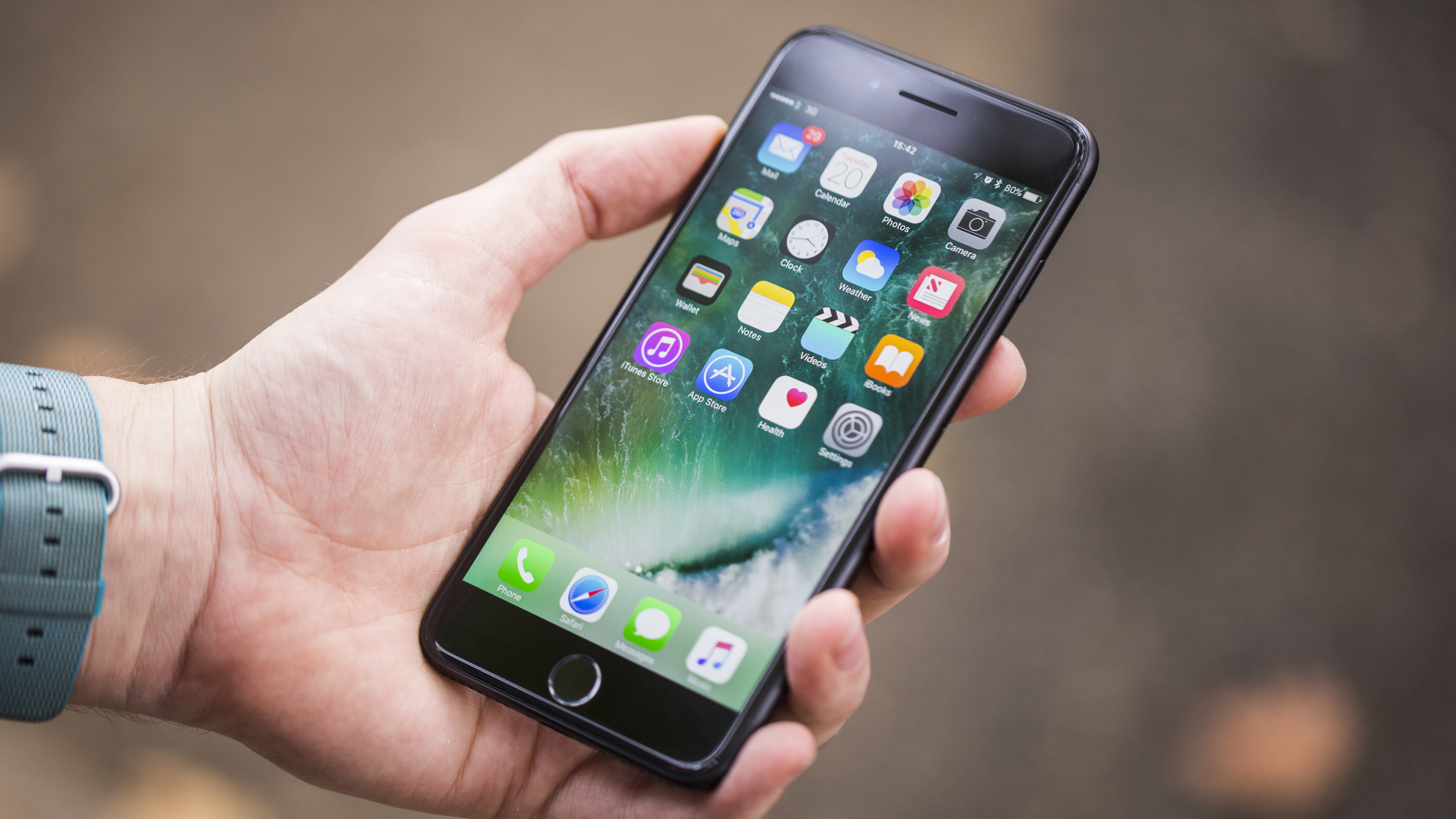
Performance
The iPhone 7 Plus is fast. Really fast. In a simple side by side comparison with the iPhone 6S Plus the 7 Plus was faster every time as we skipped between applications, fired-up multi-tasking and loaded games.
Apple's taken another leap forward in the quality of its chip design, boosting the number of cores from two to four, and coupling this with a meaty 3GB of RAM. The iPhone 7 Plus manages to better even the iPhone 7, which comes with the same chip but only 2GB of RAM.
There was no sign of slowdown, even when we had multiple applications open, were streaming music from Spotify and playing some highly intensive games – the 7 Plus performance is just all-round impressive.
Games loaded without fuss, and gameplay is smooth and detailed on the 7 Plus, with the experience further enhanced by the new dual-speaker setup.
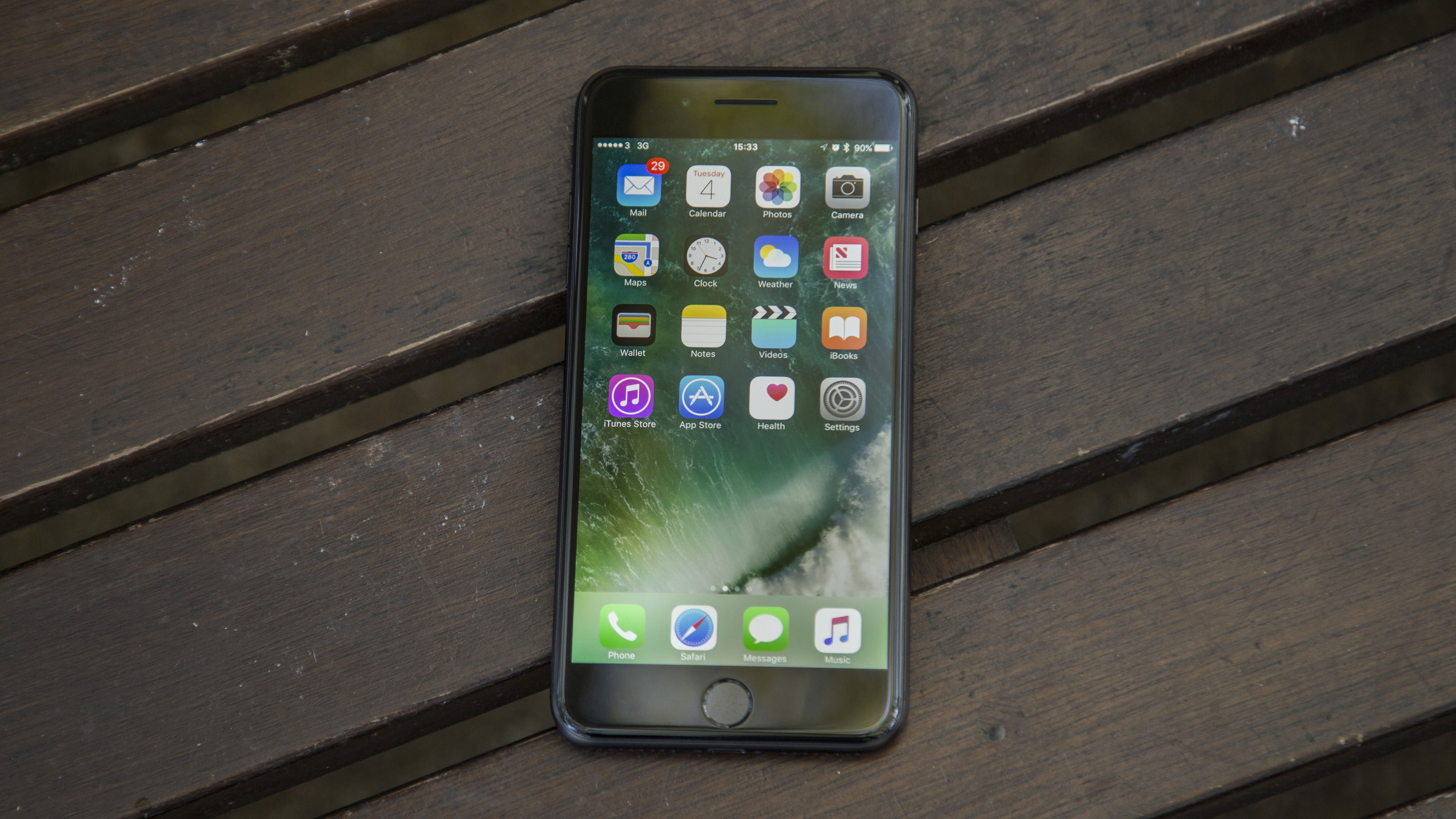
Apple has stuck a speaker at the top and bottom of the handset for stereo sound, and the resulting audio on the 7 Plus is much better than on its predecessors, with twice the volume of the iPhone 6S for room-filling sound.
Playback is equally as good for music, and the iPhone 7 Plus knows when you're holding it in landscape or portrait orientation, and adjusts the output from the speakers to ensure your ears are treated like kings.
As we've mentioned, plugging in for headphone sound can be a little trickier if you don't use the bundled Lightning EarPods, after Apple removed the standard 3.5mm headphone jack. A Lightning-to-3.5mm jack adapter is supplied in the box, but this will likely still irk, and can detract from the overall experience; it certainly had us fuming on more than one occasion.
Running the Geekbench 4 app on the 7 Plus saw it put in a slightly better performance than the iPhone 7, but as expected it comfortably outstripped the 6S Plus, coming in at around 20% faster, while it showed almost double the speed of the 6 Plus – emphatically backing up Apple's claims of serious under-the-hood improvements.
If you upgrade from any previous-generation iPhone, you'll notice the performance jump on the iPhone 7 Plus. It's as simple as that.
iOS 10, iOS 11, iOS 12
- More 3D Touch options in pop ups
- Now with iOS 12
As you've probably worked out by now, the iPhone 7 Plus is buttery smooth in operation, and iOS 10 glides along without a care in the world on the 5.5-inch display.
For those familiar with Apple's operating system, iOS 10 is more of the same, with Apple adding extra details in more obscure places so as not to interrupt the flow of the interface.
The lock screen has gained 3D Touch notifications, enabling you to reply to important messages and accept calendar invites without having to unlock the handset, and a swipe from left to right takes you to a panel stuffed full of various widgets.
You can customize, to an extent, what appears here, and we found the calendar agenda view, news box, weather widget and battery status section all very useful – the latter is excellent for quickly checking on the power levels of your Apple Watch and AirPods (or Bluetooth headset).
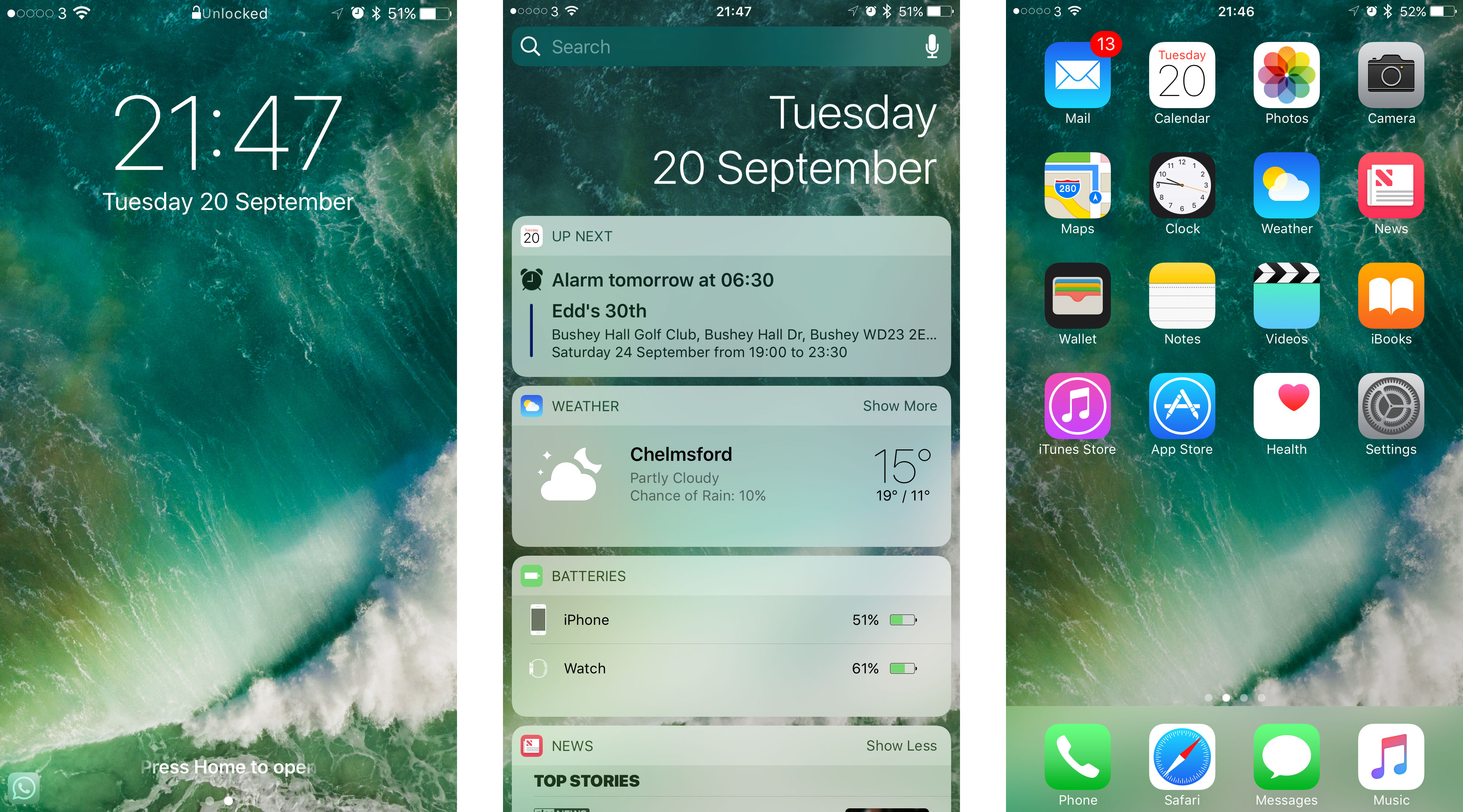
You can also access this customizable panel from your home screen – again, swiping left to right will get you there – but we found it more useful on the lock screen.
The iPhone 7 Plus will also know when you want to use it, with the raise-to-wake feature switching on the screen when you pick the handset up or pull it out of a pocket.
Control Center – accessed by swiping up from the bottom of the screen – has been overhauled, and split into separate panels. The first offers up quick settings such as Wi-Fi and Bluetooth, as well as a screen brightness slide, with music controls now shifted to their own dedicated panel that's just a single sideways swipe away.
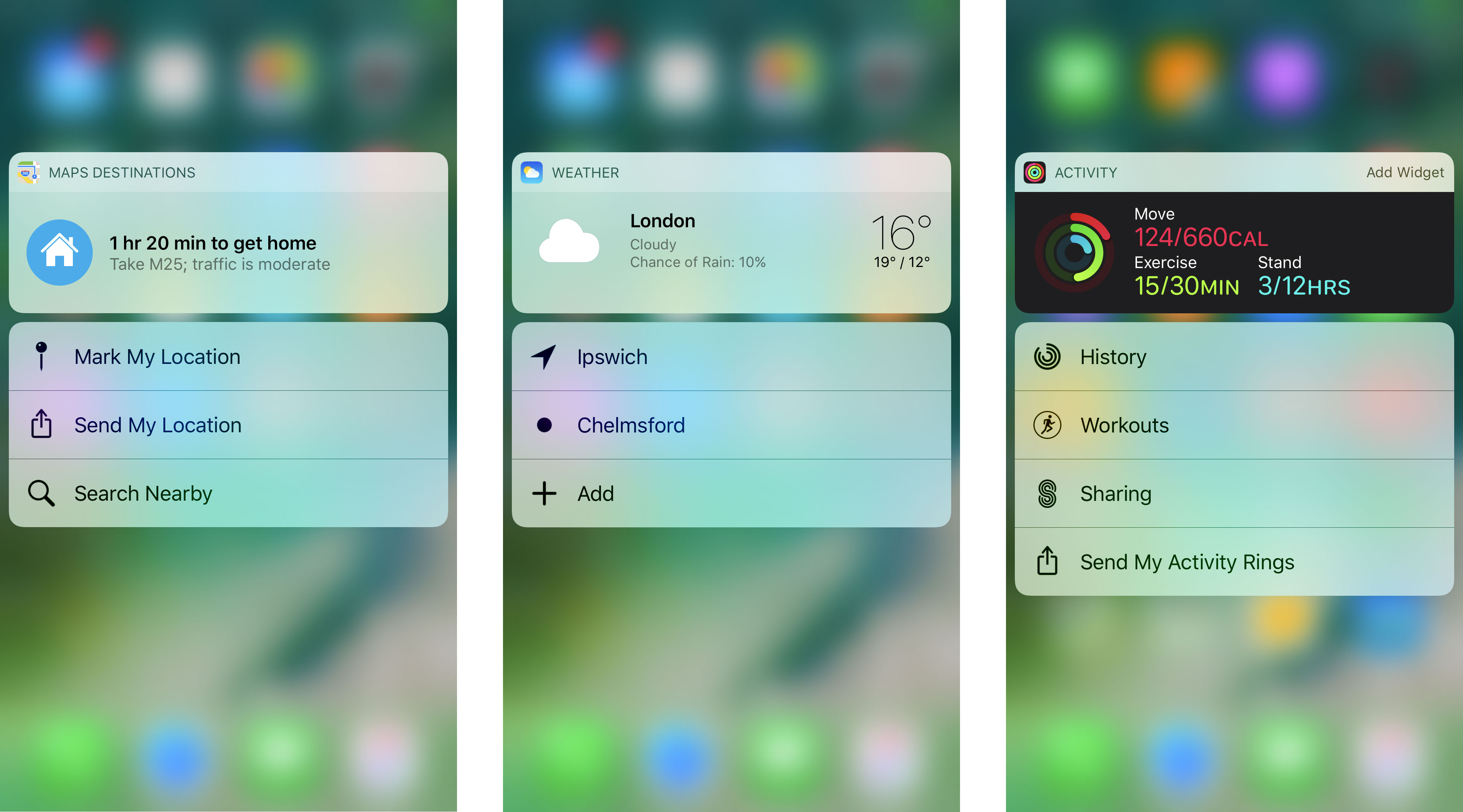
Apple has also added more features to the 3D Touch pop-up bubbles that appear when you hold down on an app icon. These bubbles can now pull through information from the applications they're associated with, be it the latest sports scores or the progress you're making towards your activity goals.
It makes the feature far more useful, and we found ourselves using 3D Touch much more on the 7 Plus thanks to the iOS 10 update – although given the snappy performance of the phone it doesn't take long to fully load an app and then skip back out.
Everything else is pretty much the same, and while you'll certainly feel at home on the iPhone 7 Plus if you're upgrading from a previous iPhone, the on-screen experience may not feel quite as new and exciting as you'd hope.
While the iPhone 7 Plus shipped with iOS 10, it's now on iOS 10.3, which brings will it general improvements with the key thing being better storage management. What does that mean for you?
Well after downloading and installing the iOS 10.3 update on your 7 Plus you'll find some of the storage re-claimed, giving you more space for apps, games, movies and music.
Since then the iPhone 7 Plus has had the iOS 11 and iOS 12 software updates, ensuring it's kept right up to date with all the new iPhones.
- Comfortably lasts a full day on a single charge
- Still requires a nightly charge to see you through a second day
Apple promises battery improvements in the iPhone 7 Plus, claiming it will give you an additional hour of life over the iPhone 6S Plus.
That's not as good as the extra two hours claimed for the iPhone 7 over the iPhone 6S, but the smaller handset wasn't as good with its battery as the Plus to start with, so we can forgive the more modest improvement here; hell, it's not always guaranteed that battery life will improve significantly from one generation to the next, so at least we're off to a positive start.
While Apple never reveals the battery capacities of its phones, users have been digging around feverishly, and it looks like the iPhone 7 Plus has a 2,900mAh power pack.
That would be up from the 2,750mAh offering in the 6S Plus, so perhaps the removal of the headphone port has freed up a bit of space inside – every cloud, eh?
Watch how the iPhone 7 Plus battery compares to the 6S Plus and 6 Plus:
It's not just an increase in battery size which Apple reckons will see the 7 Plus last longer – it's also the new A10 Fusion chip, which has two low-power and two high-power cores.
The lower-power cores handle basic tasks, such as web browsing and emails, while consuming less power, and the more powerful duo come into play when you fire-up a game or an HD movie.
Whether that has a marked effect on the battery isn't that clear, but we can report that the battery life on the iPhone 7 Plus is very good.
It'll happily last a full day on a single charge with relatively heavy usage, including over an hour of gaming, a couple of hours of Spotify streaming, and regular social media and email action, as well as a fair amount of camera time.
That's in line with the Android flagship competition, with a full day's use the benchmark for battery performance now.
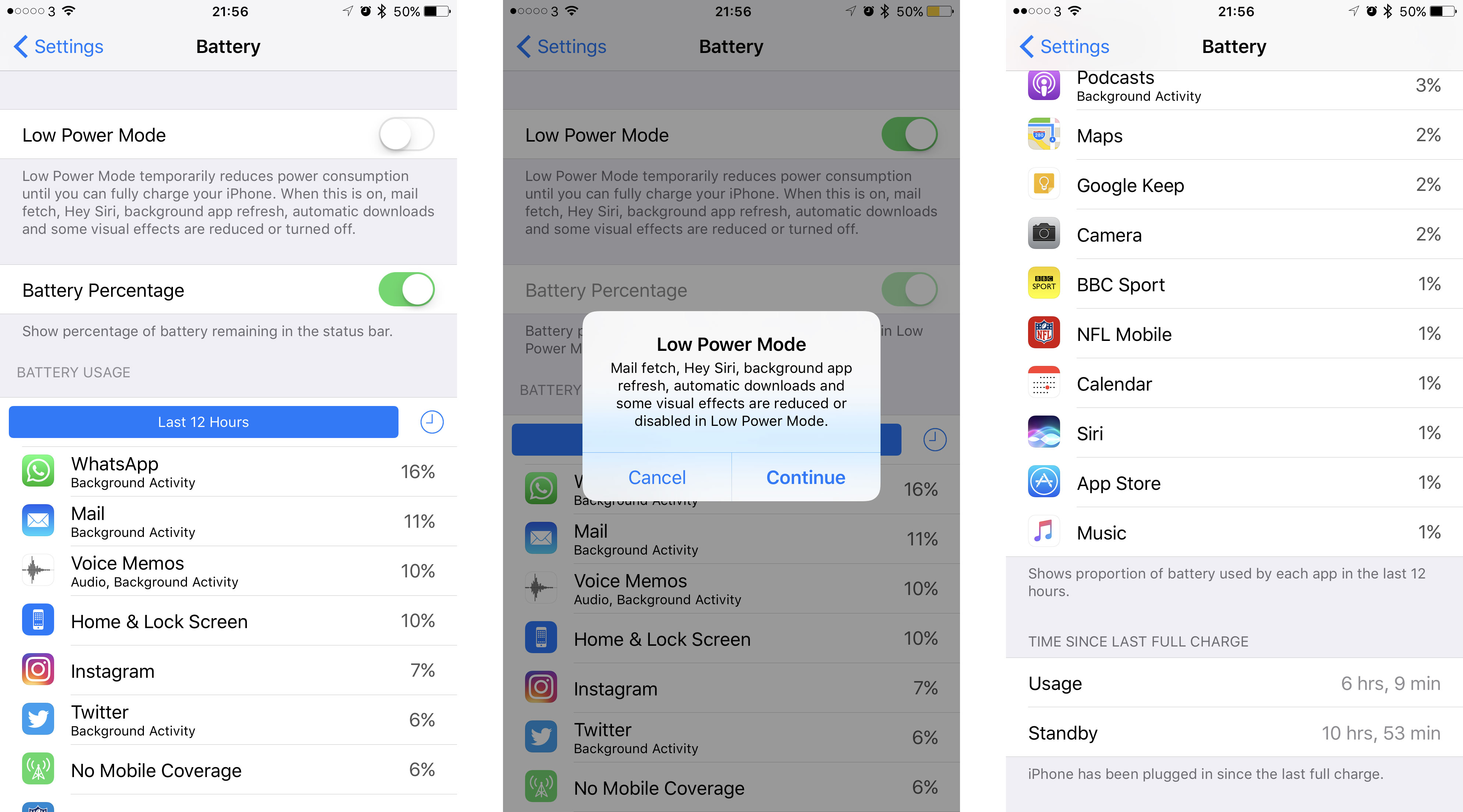
With lighter usage we were able to get to bedtime with around 30% still left in the tank, and overnight drain saw only a 4% drop-off, meaning we could at least get to our desk the next morning before needing a charge.
During our review time with the iPhone 7 Plus we didn't see any really noticeable gains in battery performance over its predecessor, but those looking to upgrade from the iPhone 6 Plus (or any older iPhone) will be pleased to know the new iPhone phablet is comfortably better in this department.
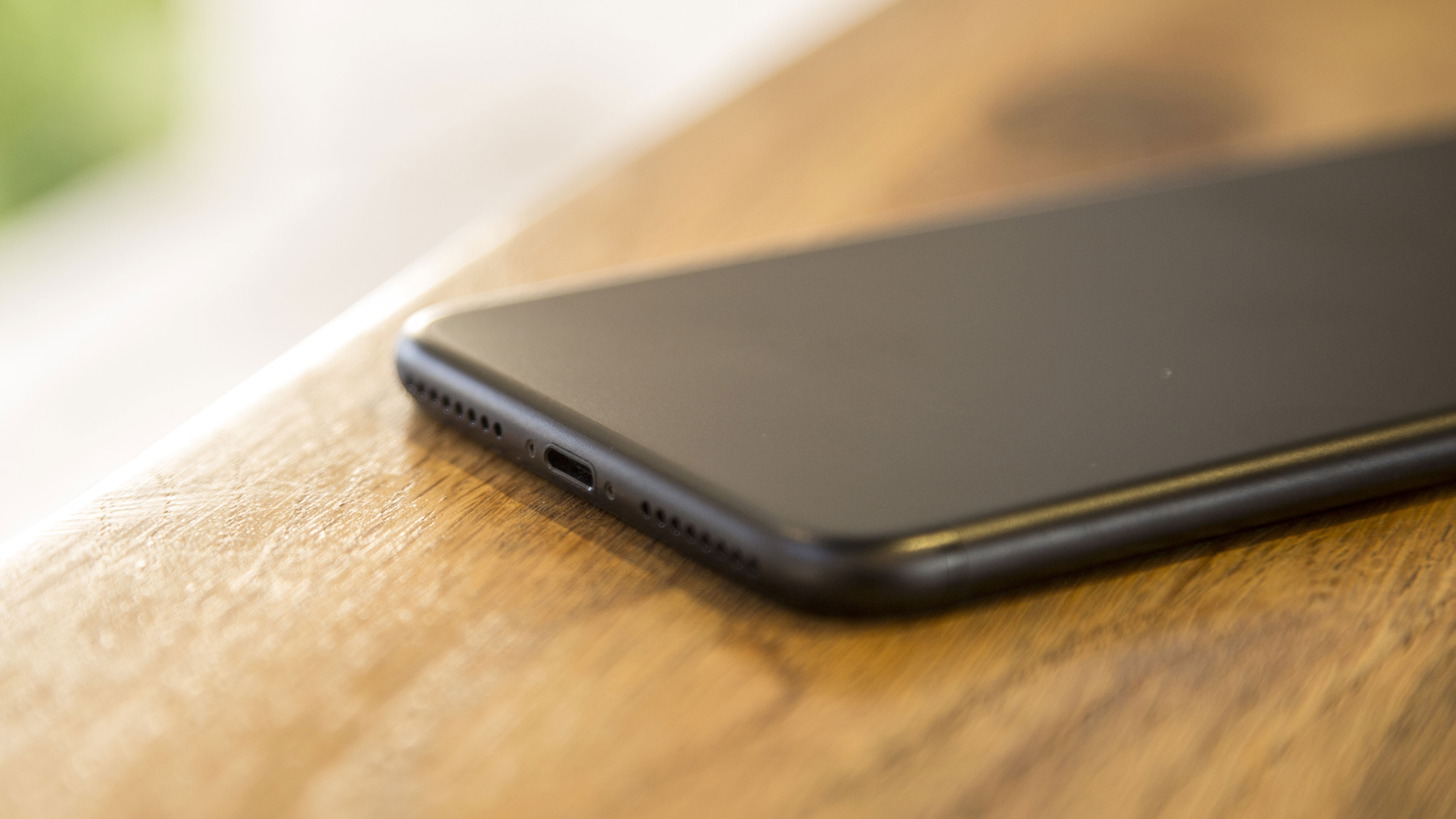
You will, more than likely, end up charging the iPhone 7 Plus every night, as it certainly won't see out two days between plug-ins – and top-ups aren't overly quick, with no sign of the fast-charging tech we've enjoyed in many other phones.
If you do find yourself running low, iOS retains the low-power mode which Apple introduced with iOS 9, helping you get the most out of the last dregs of your charge. Drop below 20% and the 7 Plus will prompt you to switch on the power-saving mode – but you can manually control this from the settings menu too.
- Excellent point-and-shoot dual cameras
- Much improved low-light performance
- Depth-of-field feature coming later this year
The iPhone 7 Plus camera is one of the major new features on the handset, and it's the first iPhone to boast two rear-facing snappers – the smaller iPhone 7 is still stuck with a single lens.
Take a look at the back of the 7 Plus and the large camera bulge is home to two 12MP cameras, one of which is a wide-angle lens while the other is a telephoto lens. In short, switching from wide-angle to telephoto gives you a 2x optical zoom, which means you don't lose image quality while getting closer to your subject.
Optical zoom is something smartphones have always struggled with, and usually you just have a digital zoom at your disposal, which reduces the quality of your shots the closer in you get. You can still digital-zoom (up to 10x) on the 7 Plus if the 2x optical option isn't enough – but it's good to see Apple taking a positive step forward here.
Apple isn't the first to slap two cameras on the back of a smartphone, with Huawei, LG, Honor and HTC just some of the rival manufacturers who've done something similar in the past – although the implementation has differed between handsets.
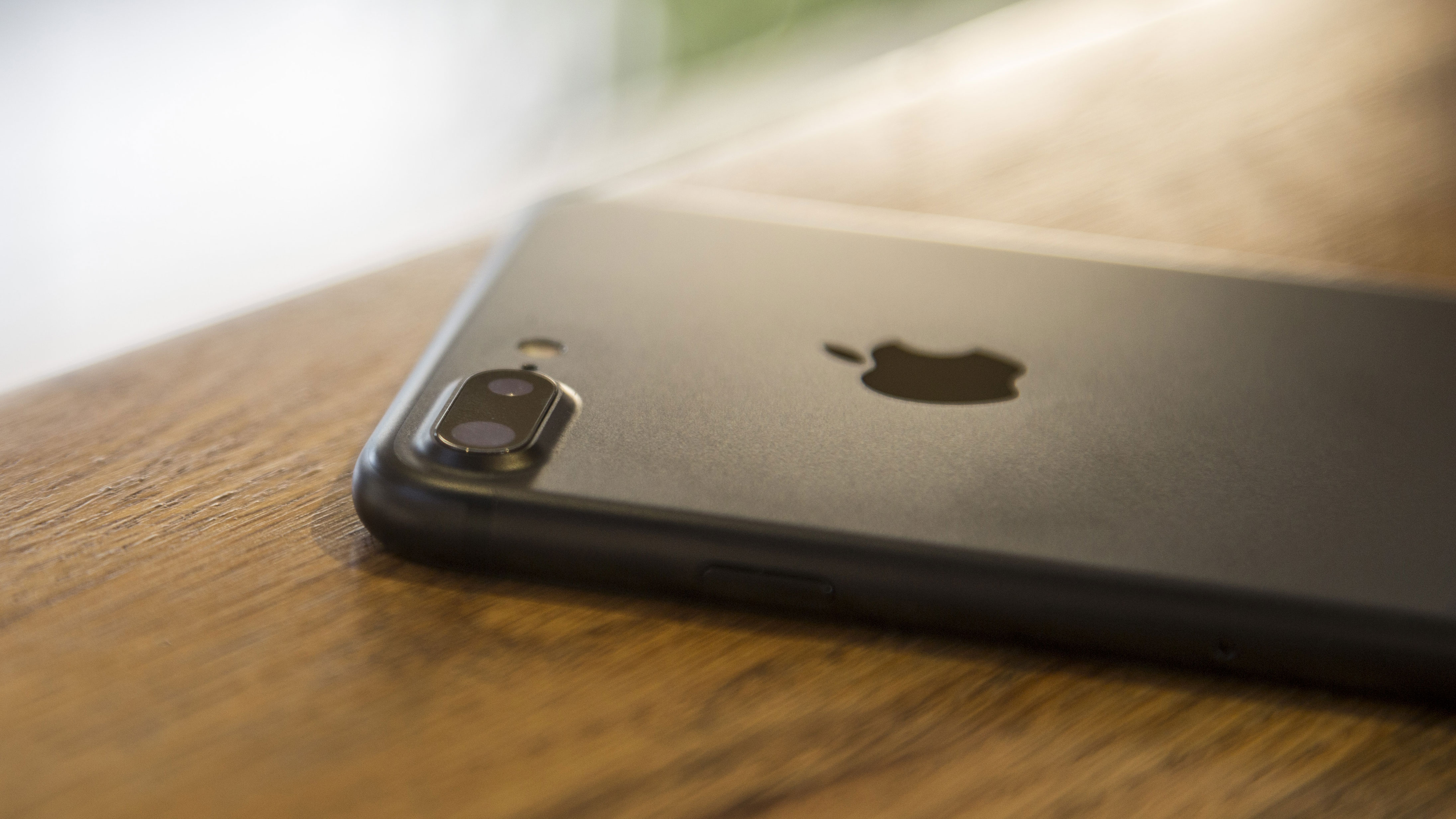
In true Apple fashion, the two cameras on the 7 Plus have the same simplicity as previous iPhone iterations, with a simple '1x' or '2x' button above the on-screen shutter button enabling you to jump between the two.
It's not just a second lens that's new on the iPhone 7 Plus either; there's a whole new camera system too, with a larger f/1.8 aperture and six-element lens allowing the cameras to suck in 50% more light than their predecessors.
And it really does work. Low-light performance from the iPhone 7 Plus is much improved over the 6S Plus, and nears the levels we've seen from the Galaxy S7 and S7 Edge. Though of course all of these phones have since been topped by newer handsets such as the Huawei Mate 20 Pro.
Compare your shots with any taken on an iPhone 6 Plus or 6S Plus and you'll also note the improved color reproduction, thanks to the 7 Plus sporting wider color capture for more vibrant shots.
They're still not quite as punchy as the shots you get from a top Samsung phone, but the improvement over its predecessors is again noticeable, and it's yet another feather in the cap of Apple's all-new camera system.
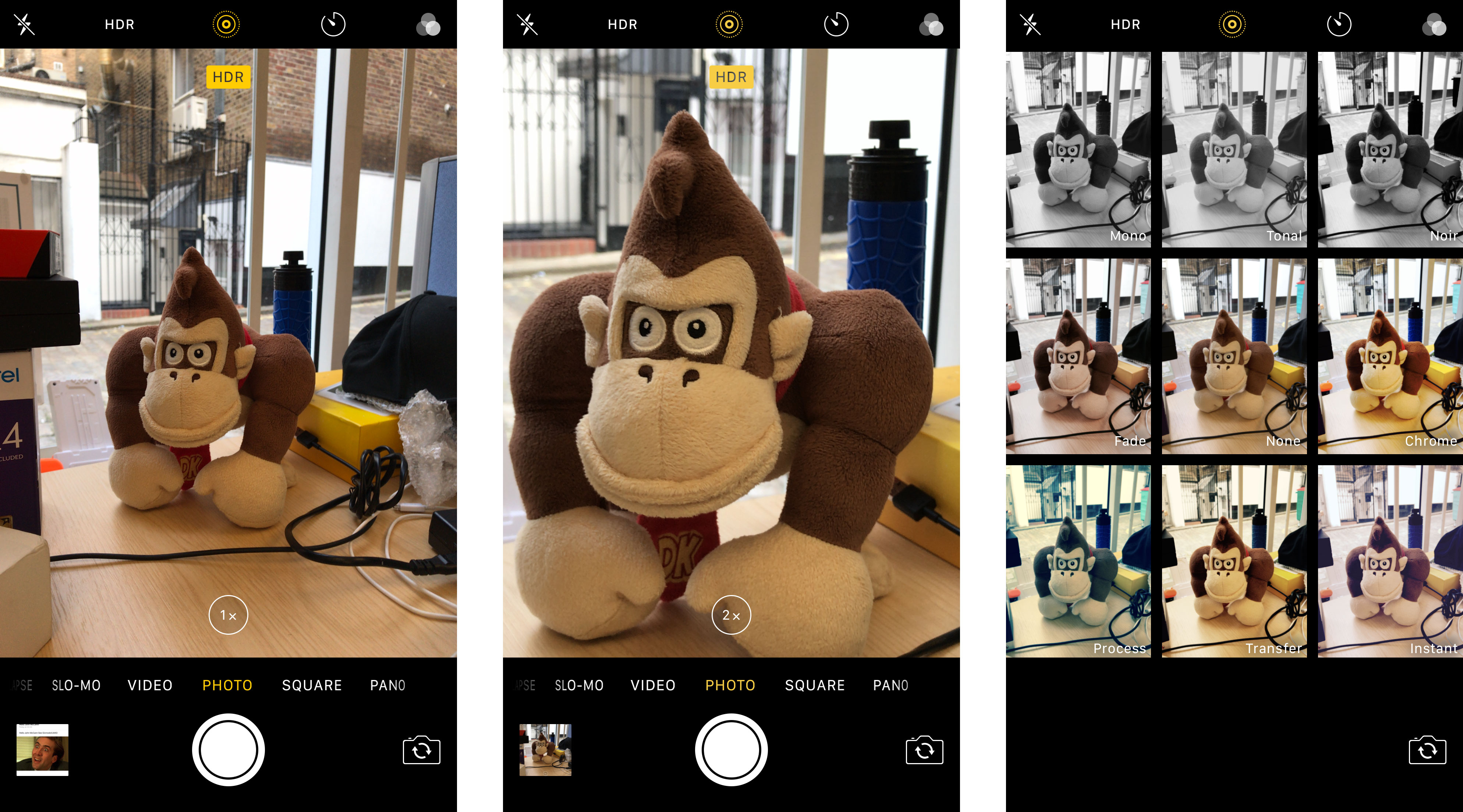
The camera app itself is just as easy to use, with no overcomplicated settings: just point, and shoot. HDR is set to auto by default, and generally does a good job of brightening up darker areas of your shots – although it can overexpose already bright areas at times.
While rival manufacturers try and stuff a whole host of modes and features into their camera apps, Apple continues to shy away from things like Pro mode, giving you just six options: photo, square, pano, video, slo-mo and time-lapse.
For everyday users it makes the app far less daunting – but those who like tinkering with the likes of exposure, shutter speed and white balance might want to take a look at the current crop of Android flagships.
Live photos are present again here, which sees the iPhone 7 Plus capture a couple of seconds of video with each photo you snap, bringing them briefly to life – and these moving images are supported by the likes of Facebook and Instagram if you fancy sharing them with friends.

The true potential of the dual-cameras wasn't fully realized at launch, as they were still working independently of each other. That changed later, as Apple rolled out a software update to unlock its depth-of-field feature.
This sees the two 12MP snappers work in unison to produce what Apple claims are DSLR-quality images.
The update allows the dual cameras to produce a bokeh effect, creating an attractive background blur around your in-focus subject.
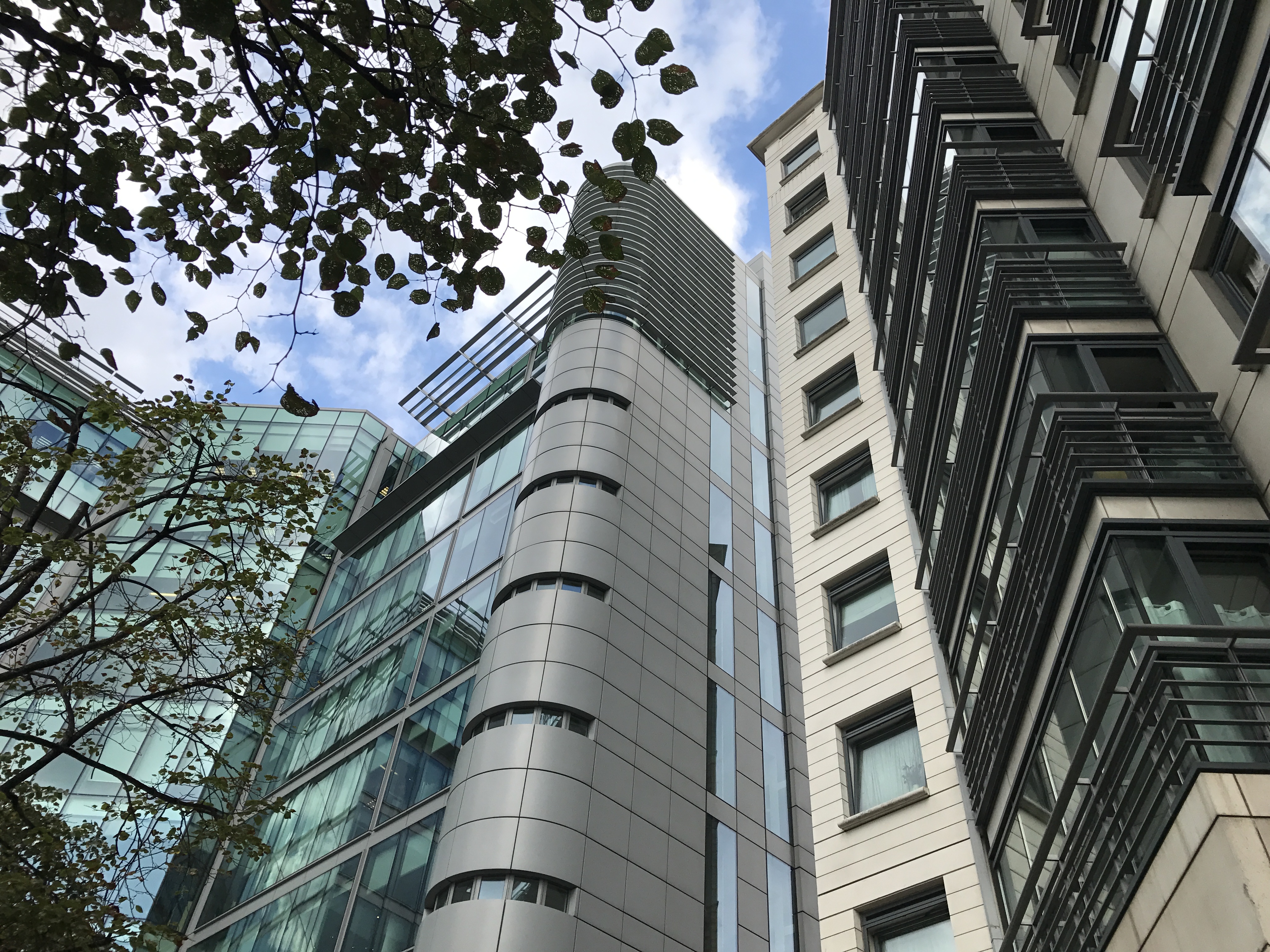
Click here to view the high-res image
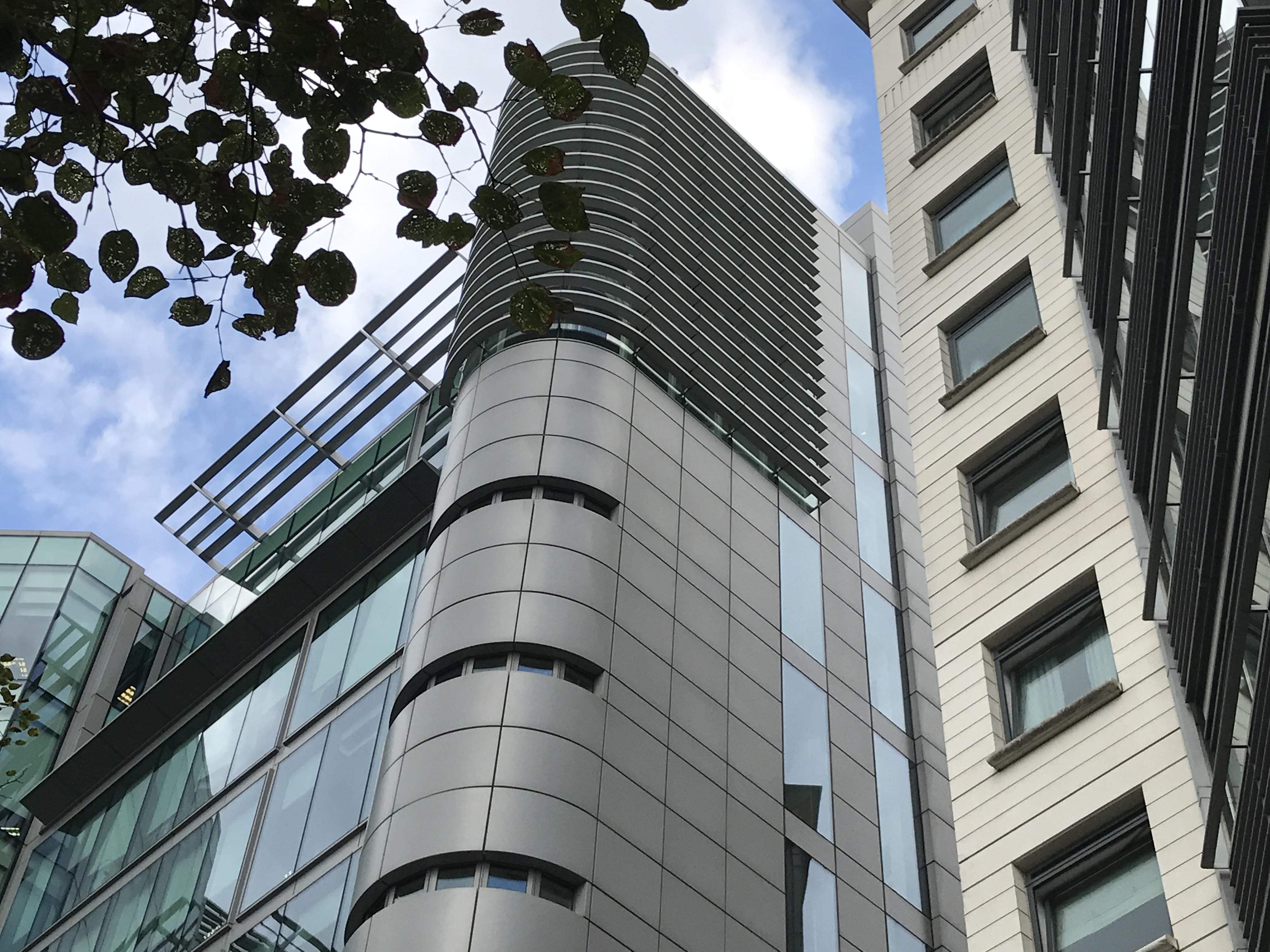
Click here to view the high-res image
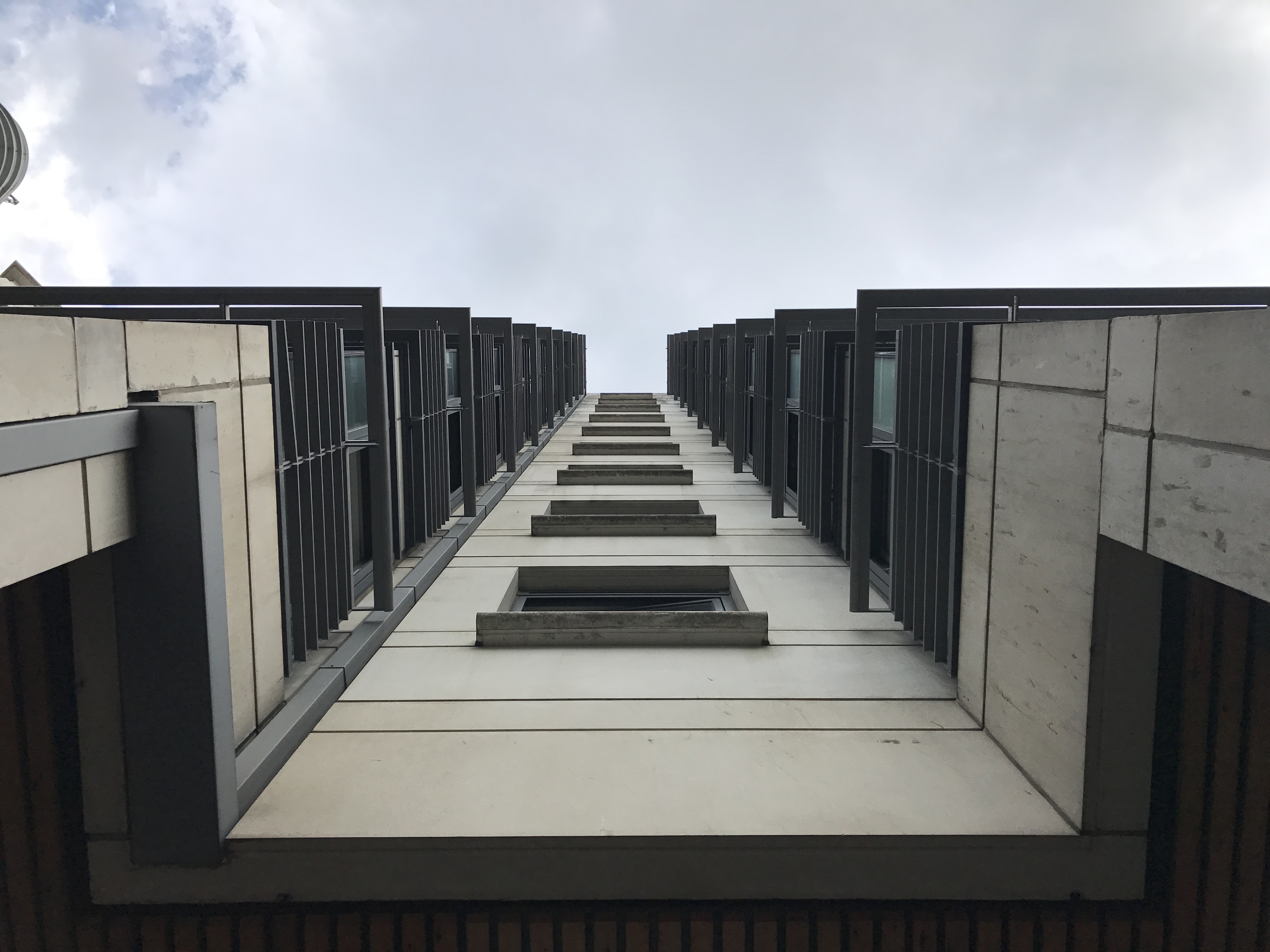
Click here to view the high-res image

Click here to view the high-res image

Click here to view the high-res image

Click here to view the high-res image

Click here to view the high-res image

Click here to view the high-res image

Click here to view the high-res image

Click here to view the high-res image
'The iPhone 7 Plus: is it a phone worth the cost?' is probably the question on your lips - and the answer is yes. In fact it's excellent, but there are a few caveats.
People will be quick to point out that not a lot has changed over the iPhone 6S Plus, and they'd be right. Apart from the waterproof body, extra power under the hood, dual cameras and questionable removal of the headphone jack, the two handsets are rather similar, especially visually.
There's not really any big innovation to speak of – although the Cupertino firm may point to the new camera engine and force touch home key - so the 7 Plus is another incremental upgrade, a bag of refinements making it two in a row from Apple since it introduced its first phablet in the iPhone 6 Plus.
While it may have not re-written the mobile landscape with the 7 Plus, Apple has taken the weaker parts of the 6S Plus and enhanced them on its new phone. The camera now feels supercharged over its predecessor, producing even better shots on a regular basis with minimum effort.

Battery life is improved, although not by much, and the waterproof design provides you with extra peace of mind that your expensive new smartphone will be able to survive a slip into the bath - whether that matters to you depends on how careless you are with your handset.
The price is fairly high, even in 2019, though it's not as if Apple is going above and beyond all competitors.
The other potential sticking point is the lack of a headphone jack. The internet has been rife with opinion for and against the move Apple calls "courageous" – and it will be a matter of personal opinion as to which side of the fence you fall on. Bundled Lightning connected EarPods and a 3.5mm port adaptor soften the blow, but for some this will annoy.

Who's it for?
The iPhone 7 Plus is certainly the better of the two 2016 iPhones. It has a bigger battery, dual cameras and more RAM under the hood, providing excellent performance and if your decision is based on specs alone you won't be disappointed with the iPhone 7 Plus.
The camera is a serious leap forward from previous iPhones, and with its easy-to-use interface it's perfect for those wanting a dependable yet simple snapper in their pocket which can perform well in pretty much any scenario.
Add to that the water resistance body and you've finally feel like you have an iPhone which can survive the little mishaps life throws at you, which is good news for the more active.
The large screen, enhanced performance and new dual speakers also make the iPhone 7 Plus great for those who like to game or Netflix on the go without the hindrance of headphones.
While this may be the better phone on paper, the iPhone 7 is the one which will likely appeal to a wider demographic with its more manageable form factor and lower price tag.

Should I buy it?
Apple has given the iPhone 7 Plus enough new features for it to be seen as the next generation iPhone after the iPhone 6S Plus, but it's a close run thing.
For those still using an iPhone 6/6 Plus (or equivalent Android phone) though, the iPhone 7 Plus is a much more enticing proposition, and you'll appreciate the upgrades and performance boost much more.
There is a case to be made for saving yourself some money without losing loads of features and picking up the iPhone 6S Plus instead, but the upgrades on the iPhone 7 Plus - especially the dual camera - make it a much more impressive buy than the smaller iPhone 7.
The iPhone 7 Plus isn't the only handset around, so before you splash the cash on Apple's budget big-screened smartphone check out some of its key rivals below.
iPhone XR
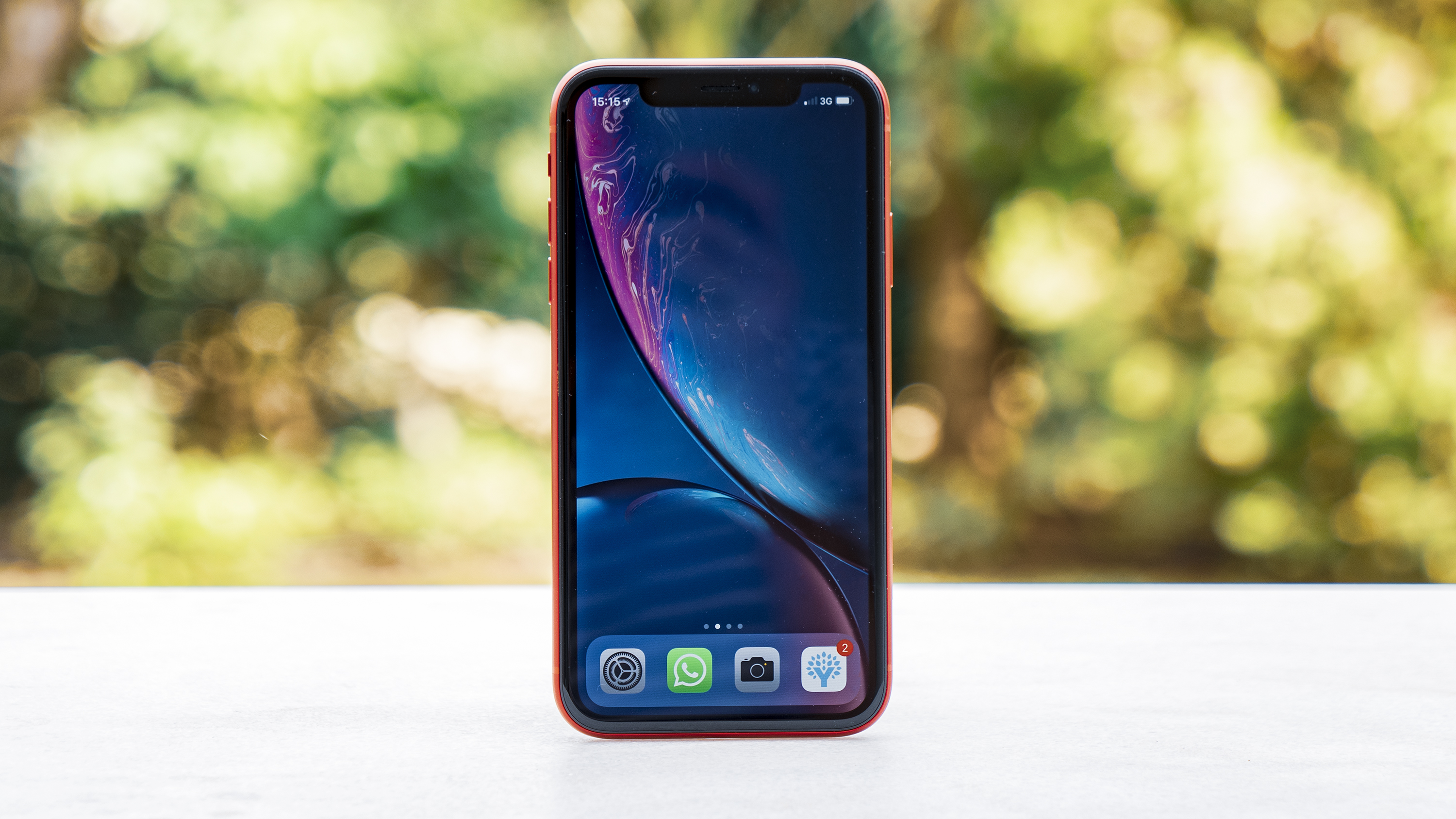
If you've got substantially more to spend but still can't quite justify a flagship then consider the iPhone XR.
It's much newer and more powerful than the iPhone 7 Plus and actually has a larger 6.1-inch screen, wrapped up in a more modern design with smaller bezels and no home button. There's only one rear camera, but it's a good one and this phone should be far more future-proofed than the 7 Plus.
- Read our iPhone XR review
iPhone 8 Plus
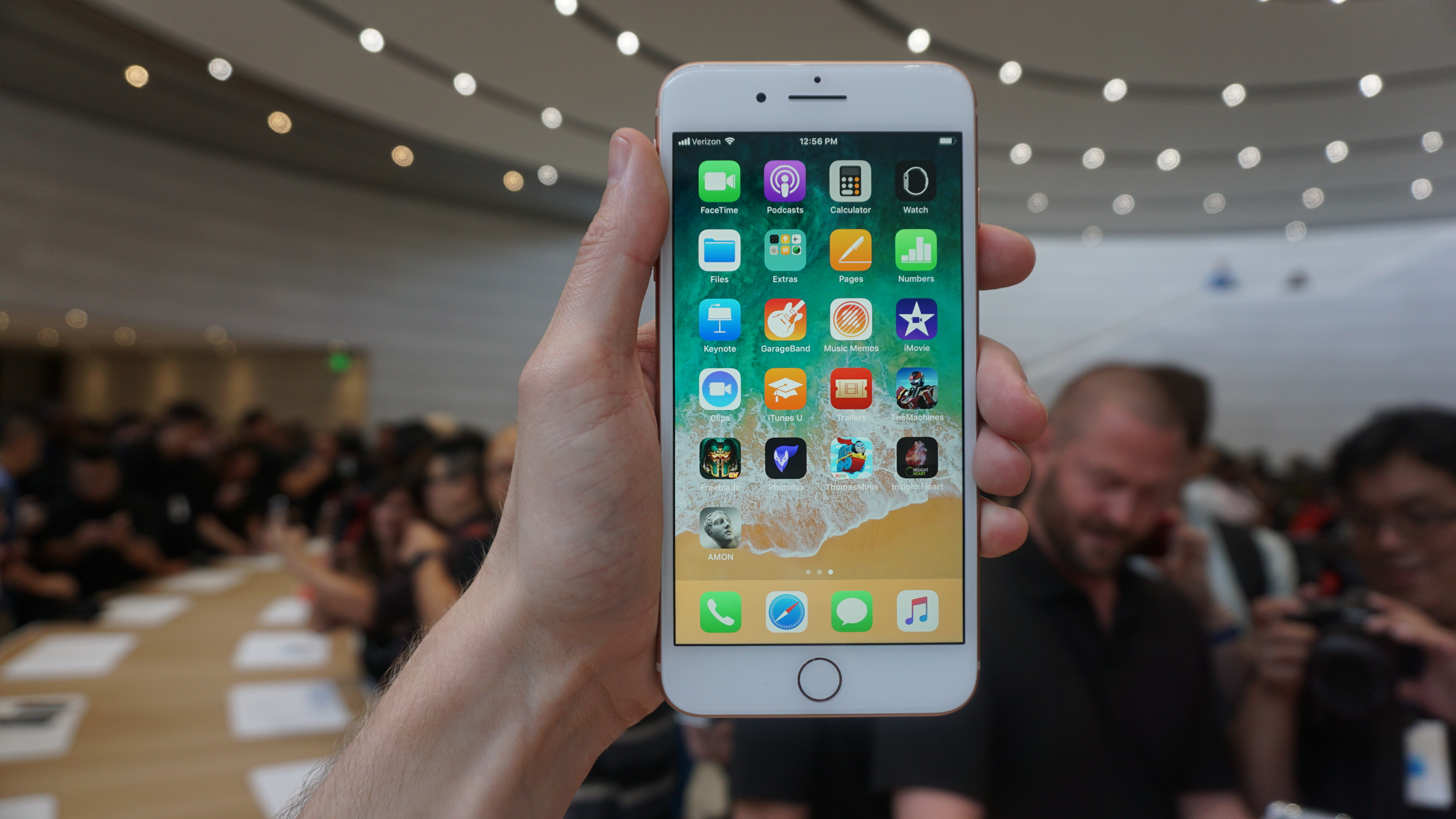
The iPhone 8 Plus is superficially similar to the iPhone 7 Plus, but with an improved screen, a glass back (allowing for wireless charging), a better dual-lens camera and more power.
It's also the more expensive option of course, but still undercuts most of Apple's smartphone range. The choice really will come down to how much these improvements matter to you, but bear in mind also that the 8 Plus is likely to keep getting software updates for longer.
- Read our iPhone 8 Plus review
iPhone 6S Plus
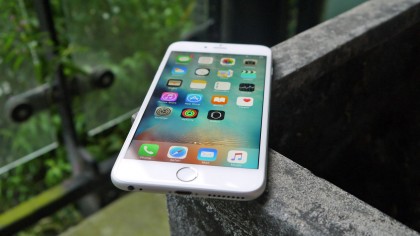
One true adversary of the iPhone 7 Plus is its predecessor: the iPhone 6S Plus. Is the newer one that much better than the previous year's model? Yes, yes it is.
Starting with the biggest feature changes, the iPhone 7 Plus is water-resistant – a never-before-seen claim on an Apple smartphone.
Next up, it's more powerful. Apple's latest runs circles around the previous iteration, thanks to its bolstered 3GB RAM and a move from two cores to four here.
Of course, it lacks a 3.5mm headphone jack, but that aside, it makes up for it with an added speaker and an increased baseline of flash storage. In some respects, you're getting more for less.
- Read our iPhone 6S Plus review
iPhone 7

As usual, the iPhone 7 Plus has a smaller sibling. However, there's more than just size separating the iPhone 7 from the larger Plus.
Running down the feature list, the phones are nearly identical – down to the dual-speaker setup, Taptic-powered Home button, and the jump from two to four cores in their respective processors.
However, they do differ in ways that might impact your purchase decision. Most noticeably, the iPhone 7 lacks the dual-camera setup found on the iPhone 7 Plus that powers the bokeh-injected Portrait mode. If you haven't seen it, it looks awesome.
Next, the smaller iPhone 7 houses 2GB RAM compared to the 3GB RAM you'll find in the iPhone 7 Plus. Not a huge deal for most, but power users will need the speed to make this purchase last for the year (or years) to come.
- Read our iPhone 7 review
Samsung Galaxy S8 Plus
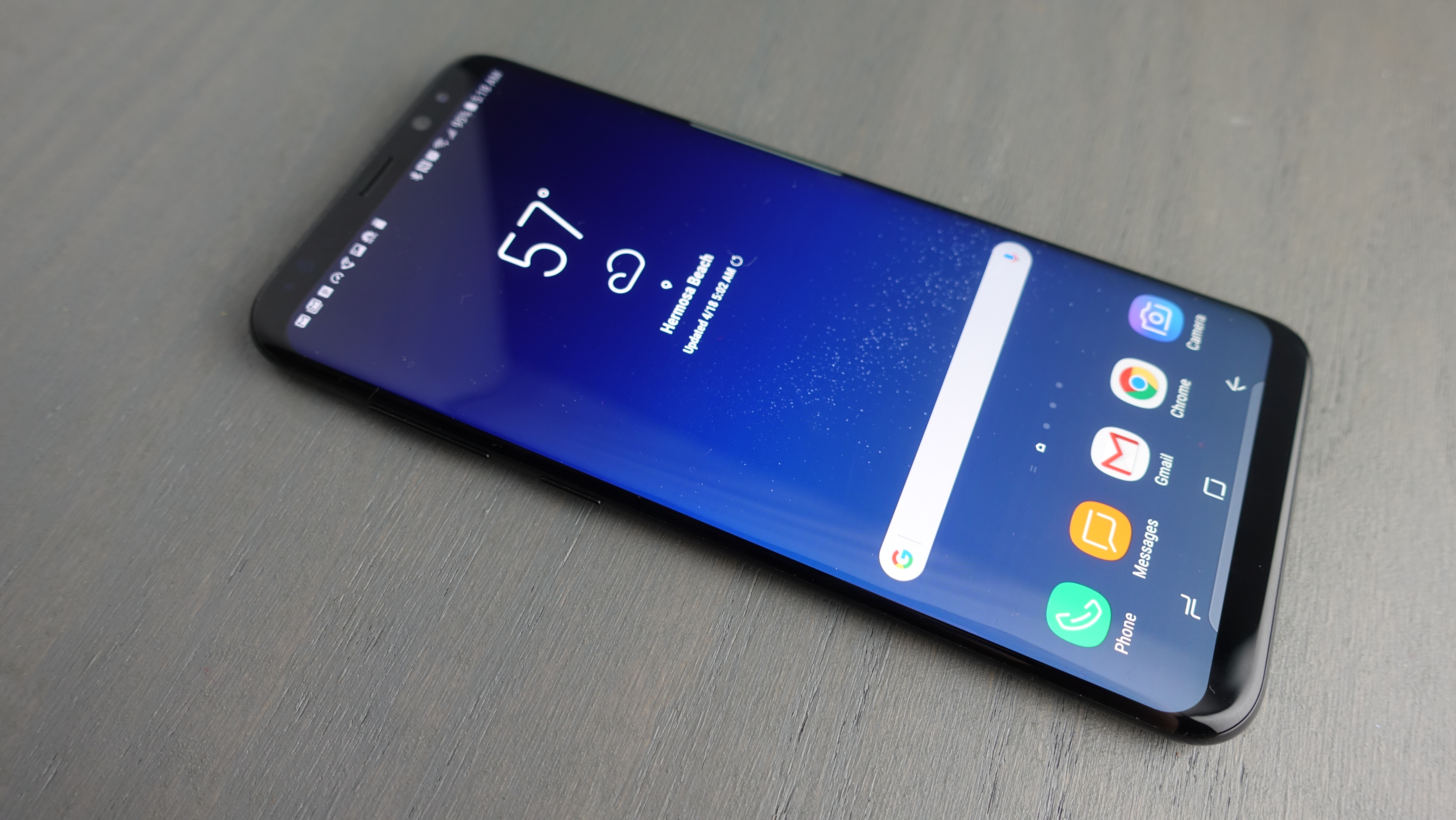
A bigger screen, a higher resolution and a more modern design but a price tag that these days is often lower. The Samsung Galaxy S8 Plus has a lot got for it.
If you're already firmly camped on the iPhone side of the fence then you're unlikely to be too fussed about Samsung's offering, but if you're considering a switch and can't stretch to the Samsung Galaxy S10 range then the Galaxy S8 Plus is well worth considering.
- Read our Samsung Galaxy S8 Plus review
0 comments:
Post a Comment